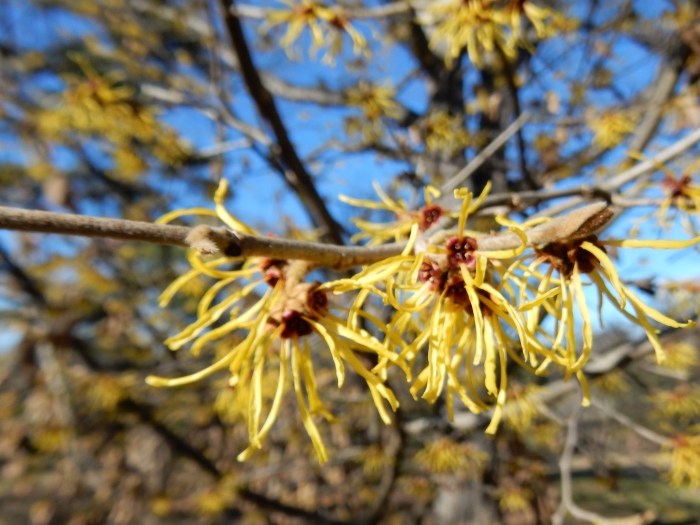Chinese Witch Hazel
(Hamamelis mollis)
Chinese Witch Hazel (Hamamelis mollis)
/
/

Shuvaev
CC BY-SA 4.0
Image By:
Shuvaev
Recorded By:
Copyright:
CC BY-SA 4.0
Copyright Notice:
Photo by: Shuvaev | License Type: CC BY-SA 4.0 | License URL: https://creativecommons.org/licenses/by-sa/4.0 | Uploader: Shuvaev | Publisher: Wikimedia Commons | Title: Hamamelis_mollis,_Morris_Arboretum_06.jpg | Notes: {{Information |Description ={{en|1=Names: Ilex decidua Walt., Deciduous Holly, Possum Haw, Possum Haw Holly, Possumha Classification: Plantae > Magnoliophyta > Magnoliopsida > Aquifoliales > Aquifoliaceae > Ilex > Ilex decidua.}} |Sour... |
































Estimated Native Range
Summary
Hamamelis mollis, commonly known as Chinese Witch Hazel, is a deciduous shrub native to the forest margins and stream banks of East Asia, particularly in China. It typically grows to a height of 12-15 feet (3.6-4.5 meters) and a similar width, with a rounded, open form. The fragrant flowers are bright yellow with a red base, appearing on bare branches from late winter to early spring, providing a striking display when few other plants are in bloom. The flowers have four ribbon-shaped petals and are particularly showy due to their contrast against the bare branches. The fruit is a woody capsule that splits open explosively to disperse seeds.
Chinese Witch Hazel is valued for its winter flowering period, offering color and fragrance when most other plants are dormant. It is used in cultivation for ornamental purposes in borders, woodland gardens, and as a specimen plant. It prefers full sun to part shade, well-drained soil, and moderate watering, although it can tolerate clay soils if drainage is adequate. It is generally low-maintenance but can be susceptible to leaf spot and powdery mildew. Pruning should be done in spring after flowering to maintain shape and promote vigorous growth.CC BY-SA 4.0
Chinese Witch Hazel is valued for its winter flowering period, offering color and fragrance when most other plants are dormant. It is used in cultivation for ornamental purposes in borders, woodland gardens, and as a specimen plant. It prefers full sun to part shade, well-drained soil, and moderate watering, although it can tolerate clay soils if drainage is adequate. It is generally low-maintenance but can be susceptible to leaf spot and powdery mildew. Pruning should be done in spring after flowering to maintain shape and promote vigorous growth.CC BY-SA 4.0
Plant Description
- Plant Type: Shrub
- Height: 10-15 feet
- Width: 10-15 feet
- Growth Rate: Slow
- Flower Color: Yellow
- Flowering Season: Winter, Spring
- Leaf Retention: Deciduous
Growth Requirements
- Sun: Full Sun, Part Shade
- Water: Medium
- Drainage: Medium
Common Uses
Bank Stabilization, Bee Garden, Bird Garden, Border Plant, Butterfly Garden, Deer Resistant, Erosion Control, Fragrant, Showy Flowers, Street Planting
Natural Habitat
Forest margins and stream banks in East Asia, particularly in China
Other Names
Common Names: Chinese Witch-Hazel, Kinesisk Trollhassel, Jin Lu Mei
Scientific Names: , Hamamelis mollis, Hamamelis mollis var. oblongifolia,
GBIF Accepted Name: Hamamelis mollis Oliv.